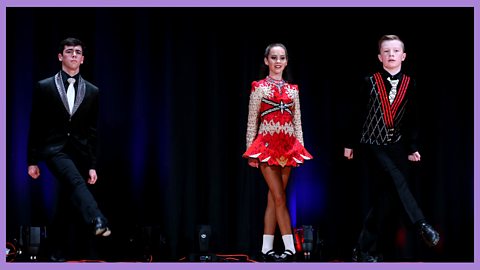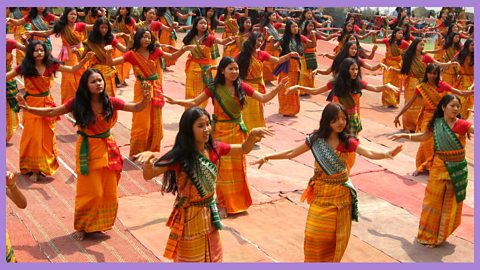The second dance session in the unit is inspired by dance moves from Greece.
2. Greek dance
The children will learn a simplified version of a circle dance from Northern Greece about a deer walking through the forest. They dance it all together as a class, in one big circle or two smaller circles. Circle dances often have two or three movements repeated over and over again, so the dancers can concentrate on the circle itself, and dancing with each other, so that anyone can join in.
Resources
Download the audio for this dance session as an mp3 file.

Guidance on using the dance sessions in this unit with your group (pdf)

Khastorias: a circle dance from Greece
Lesson summary
- Running freely and happily.
- Learning the ‘step, step, step, hop’ pattern.
- Making a deer shape.
- Learning the dance:
- keeping the circle round
- step one: step, step, step, hop
- step two: stepping in and out of the circle in deer shape.
- The whole dance.
Note on performance
If you wish to take this dance further, you could try it in smaller circles, or in two circles, one inside the other. You could also dance it in lines, travelling around the room in different patterns. Since the basic steps are simple you might like to devise another one with the children and add it to the dance – so that for one link they bow with the deer, for the next they wave with the trees, or similar.

More from this series
1. African dance. audio
Pupils learn simple steps from traditional dances from Senegal and The Gambia in Africa.

3. Irish dance. audio
Includes simple dance steps inspired by traditional Irish dance - straight posture with arms by the side.

4. Indian dance. audio
The final session focuses on dance steps from India - in particular from the northern state of Rajasthan.
